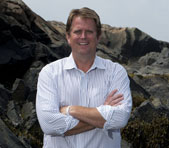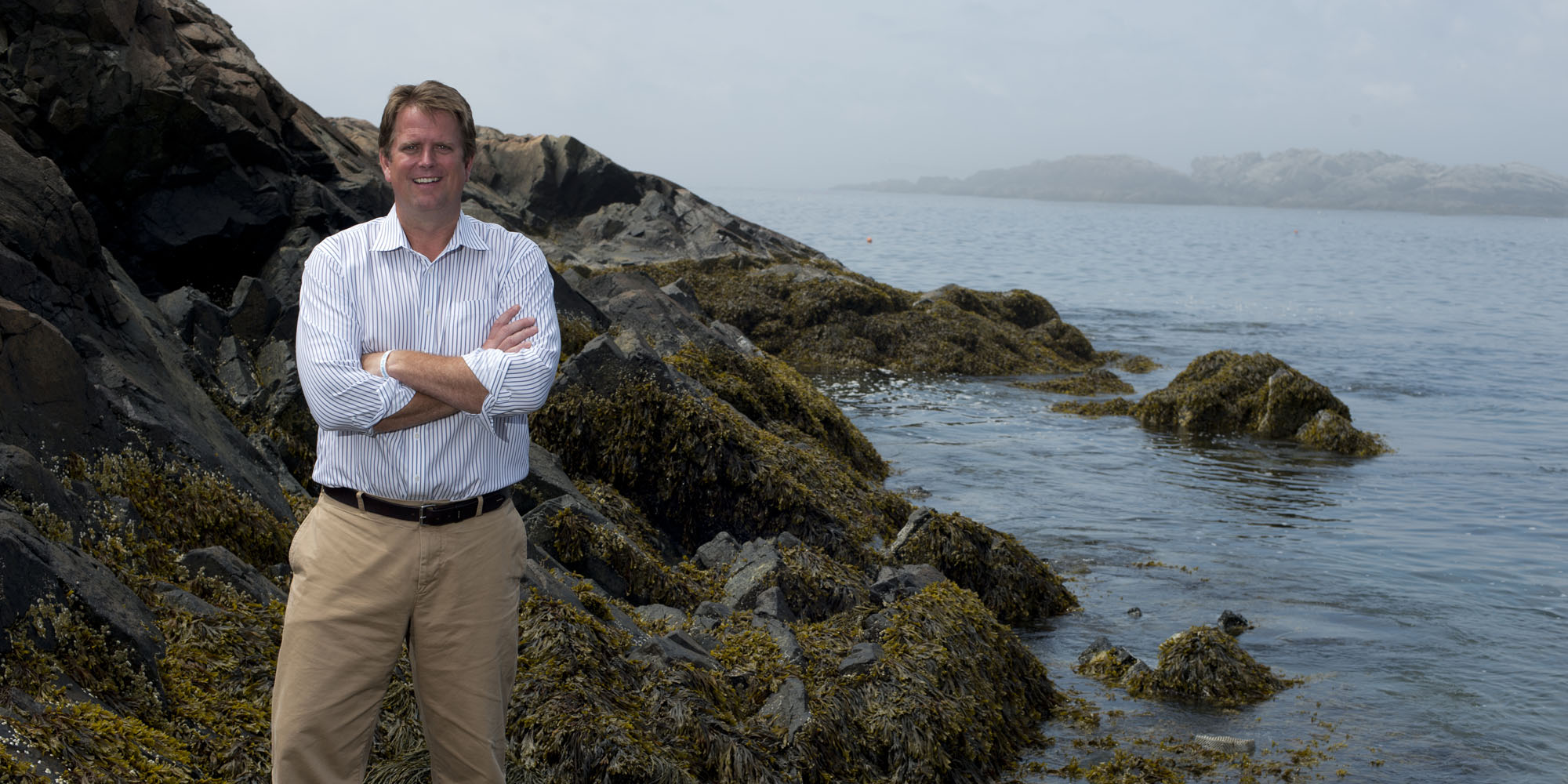by Greg St. Martin
This summer, an interdisciplinary research team led by Marine and Environmental Sciences professor Geoff Trussell will study community organization and connectivity of rocky intertidal habitats throughout the Gulf of Maine. The project is intended to help inform the development of predictive ecological models that can be used to improve how these ecosystems are managed and preserved.
The study’s goal is to identify common rules governing community organization that can be scaled up to explain broad biogeographic variation across the Gulf of Maine. The gulf spans 36,000 square miles, including the shores of Northeastern’s Marine Science Center and extending as far north as the Canadian provinces of Nova Scotia and New Brunswick.

Geoff Trussell is Professor and Chair of the Marine and Environmental Sciences Department and director of the Marine Science Center in Nahant, MA.
The research study — which is supported by a $1.7 million award from the National Science Foundation’s Biological Oceanography program — has broad implications. According to Trussell, waters in the Gulf of Maine are warming at a faster rate than nearly all of the world’s other saltwater ocean basins. Plus, he said, they’re being increasingly invaded by non-native species.
The researchers will survey 22 sites throughout the Gulf of Maine to evaluate the variation in factors such as species composition, food availability, wave energy, and other environmental stressors and analyze what is driving the differences between these coastal marine communities. Trussell noted that past studies have historically focused on the southern Gulf of Maine. Theirs, he said, will be the first to focus on the entire Gulf in order to better understand the various factors driving individual community dynamics.

Marine and Environmental Sciences Assistant Professor Tarik Gouhier
Trussell noted that his former doctoral student, Elizabeth Bryson, played a key role in research published last year in the journal Ecological Monographs showing distinct differences in how marine communities are structured in the northern Gulf compared to the south. These findings, he added, provided compelling evidence that more work needed to be done to inform adequate scaling of local rules that pertain to the entire Gulf of Maine.
“Here you have communities that superficially look similar,” Trussell said. “They contain the same species and so on, but they have different processes operating to determine how they recover from disturbance and how they are ultimately organized.”
These differing community dynamics are vast and complex. For many communities, coastal oceanography is a major factor, as it influences the delivery of species from one community to another. The abundance of certain species is also dictated by water temperature. Another factor is seaweed—in the northern Gulf it is a critical marine resource for harvesters and in the south it plays a key role in buffering many species from the heat stress.
Trussell added that invasive species—and how warming waters enhance their establishment—play a huge role in how these communities are organized.
“If we’re going to be able to predict those impacts, we really need to understand how these communities work across this broad scale,” he said.

